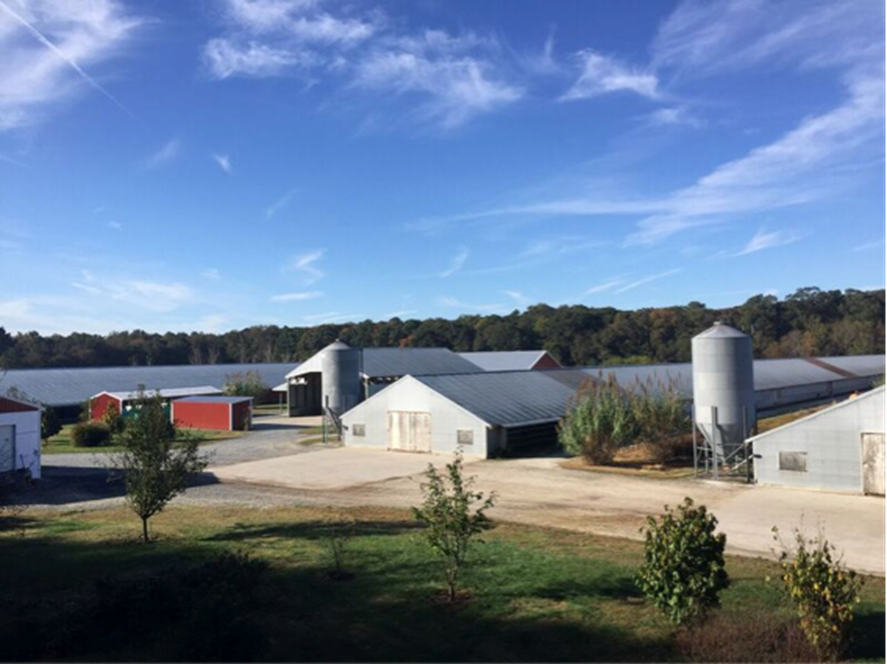Our environmental footprint isn’t just made up of how much electricity and water we use, but also what we eat. In fact, eating patterns focused on reducing the carbon footprint are known as the, “Climatarian diet.” And guess what? Chicken is recommended as one of the top 5 Climatarian diet-friendly foods. Why? On this Earth Day 2022, let’s take a closer look.
The Difference One Decade Can Make
The U.S. (broiler) chicken industry is focused on reducing its environmental impact, and that diligence is making a notable difference. Even though U.S. broiler production increased 21% from 2010 to 2020, the chicken industry still made significant progress in key sustainability intensity metrics (environmental footprint per kilogram of bird), including:
- Land use: down 13%
- Greenhouse gas emissions (carbon footprint): down 18%
- Water consumption: down 13%
- Fossil resources use: down 22%
- Particulate forming emissions: down 22%
Commitment to Technological Advancements
In 2020, broiler exports totaled 7.4 billion pounds and Americans ate approximately 160 million servings of chicken each day! Through continuous innovation, the chicken industry has become significantly more efficient in its use of electricity, farmland, water and other valuable resources, ultimately reducing greenhouse gas emissions.
Air
Despite the broiler industry’s relatively small carbon footprint, chicken companies are actively pursuing accessible and affordable technology upgrades to improve how broiler production affects air quality, including:
- LED lighting: In recent years, many chicken farms have switched to LED lighting, which can result in energy savings of 80-85% compared to traditional incandescent lightbulbs.
- Computer controls: Modern growout houses (aka a living environment that provides chicks enough space to literally “grow out” into full-sized chickens) are controlled by computers that continually change temperature and ventilation to optimize environmental conditions, while saving gas and electricity.
- Solar panels: Some chicken farmers are installing solar panels to limit their energy use by producing their own electricity on-site.
Land
Biodiversity thrives better when less land is used for human purposes, including agriculture. The Broiler Production System Life Cycle Assessment: 2020 Update showed the chicken industry is making great strides in conserving land resources. Specifically, land use per kg of production (broilers plus culled hens) decreased by 13% between 2010 and 2020. Although the industry’s cumulative land use increased by 5.4%, production increased by a full 21% to better meet global demand and our world’s growing population.
Water
Water is essential for food production, including chicken. From the farm to market, water is required throughout the various steps of broiler production—yet water consumption (per kg of bird produced) is down an additional 13% this past decade. How is the chicken industry conserving water? Oftentimes, these 3 technologies are key for saving and recycling water:
- Computer monitoring: Growout houses are equipped with computer systems that monitor farm water usage on the farm and notify producers of potential issues, such as leaks, which saves water.
- Nipple dispenser systems: Most modern chicken farms use “nipple” watering systems as another resource-saving tool. Nipple watering systems are pin-activated water dispensers, much like a rabbit or hamster water bottle with the ball bearing. When the birds press the pin, water is released. This helps limit any water being spilled on the poultry litter, or floor, and it only dispenses water when the birds want to drink.
- Cooling pads: Most growout houses contain cooling systems that consist of cool cell pads, which evaporate water at one end of the house and have large tunnel exhaust fans at the other end. This recycles farm water and keeps chickens cool.
No matter whether you prefer your chicken grilled or crispy, or white or dark, you can take comfort in knowing U.S. chicken is one of the most sustainable protein options. What’s more, the broiler industry is continuously committed to further minimizing its environmental footprint.
Take a deeper dive into why U.S. chicken is such a sustainable food source. View the complete 2020 U.S. Broiler Chicken Industry Sustainability Report here.


